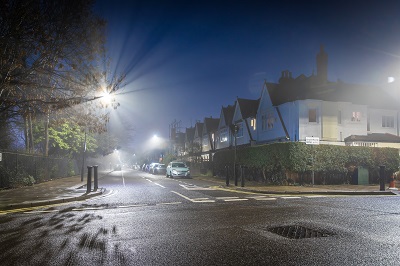Jenny Divine is the RTPI's Research Officer
 As a child, visiting the local playpark would fill me with anxiety. Large groups of children were intimidating, particularly if they were engaged in rough physical play. So, I would often scan the area for a quiet place, avoiding the most popular play equipment, and would quickly relocate if I felt my chosen area was getting overcrowded.
As a child, visiting the local playpark would fill me with anxiety. Large groups of children were intimidating, particularly if they were engaged in rough physical play. So, I would often scan the area for a quiet place, avoiding the most popular play equipment, and would quickly relocate if I felt my chosen area was getting overcrowded.
These feelings of anxiety and intimidation could be put down to shyness. And perhaps it was. But they pursued me into young adulthood; the cause shifting from play to travel – particularly on foot and at night. Walking with my keys between my fingers, my mobile phone at the ready, and taking the longer (better lit) route home sums up the majority of my solitary evening (and early morning) walks home in my late-teens and 20s.
But what stands out for me the most looking back, isn’t the feeling of being unsafe. It’s the fact that I didn’t (at the time) consider this feeling to be unusual or out of place and, therefore, unacceptable. Instead, it was an accepted (albeit inconvenient) part of a night out.
Although there are a multitude of factors that impact our experiences of public spaces, it’s fair to say that women and girls do experience these spaces differently compared with men and boys. Recent studies tell us that from the age of 8, girls’ use of public parks declines. This is due to a variety of factors, including the tendency for boys to dominate formal play areas meant for older children such as skateparks and football pitches, as well as girls feeling that other play equipment in the playpark (such as swings and climbing frames) isn’t meant for them either, with a priority given to younger children.
This sense of “unbelonging” follows girls into adulthood, and the design of our public spaces most certainly has a role to play in this. Lack of public toilets, benches, wide pavements, and lighting are just a few of the inadequacies of our public spaces that we know make them exclusionary and lead to women, girls and minority communities feeling designed-out of these places.
However, it would be remiss of me to say that nothing has been done to identify and tackle these issues. Since the emergence of feminist geography in the 1970s, strides have been made to develop thinking around gender divisions and inequalities in relation to the household, employment, travel, access to services and facilities, architecture, and the policy and decision-making practices that limit women’s ability to have a voice in their environment.
There is insufficient space in this blog to highlight all the actions and efforts that have been made over the decades to change this. But notable events include the Greater London Authority’s establishment of a Women’s Committee in 1981. This Committee then went on to produce a Women’s Handbook setting out, amongst other things, the impact of planning on women.
In 1983, The Town and Country Planning Summer School (TCPSS) held an evening debate in St Andrews on women and planning featuring a talk by Janice Morphett. This was followed by a series of seminars conducted by the TCPSS in 1984 to identify not just the issues women experience because of planning, but also to discuss the solutions.
The RTPI has also played a role in the development of thinking around women and planning over the decades. It established a working group on women in 1982, produced an advice note on planning for women in 1996, and through a project led by Professor Clara Greed in 2003 published a Gender Equality and Plan Making toolkit.
So where are we now?
More recently, in 2020 and 2021, the RTPI undertook further studies into the role of women in the planning profession as well as the impact of planning on women’s daily lives. These studies found that, despite previous efforts, women are still facing gender-related barriers within the planning profession, which is failing to integrate their needs.
So yes – we have come a long way but we should not be complacent. For with complacency comes inaction and we still have a long way to go.
RTPI President Sue Bridge said in her inauguration speech:
“We all work for the same common good. As planners we want to create great places where people want to live, work and play. Healthy places which nourish us and the world about us. This is our shared ambition.”
But, what is “great” for some, might not be “great” for all.
Tackling inequalities in the planning system and in our built environment is critically important when we are working for the common good, and we cannot forget this.
I am pleased to see efforts continue in, for example, the establishment of the charity Make Space for Girls in 2021 which seeks to redress the gender imbalance in parks and public spaces.
I am also encouraged by Glasgow City Council’s initiative to turn Glasgow into the UK’s first feminist city, spearheaded by Councillor Holly Bruce. What will this mean for the City of Glasgow in the long-term? Only time will tell. But this is most certainly a positive step towards bringing gender equality out of the margins and into the mainstream of policy-, plan-, and decision-making.
You can find out more about how we are marking Women's History Month here.


